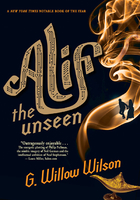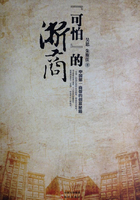Introduction
The concept of the "New South" has elicited fierce debate among historians since the mid-twentieth century. At the heart of the argument is the question of whether the post-Civil War South transformed into something genuinely new or held firm to patterns of life established before 1861. The South did change in significant ways after the war ended, but many of its enduring trademarks-the most prominent being white supremacy-remained constant well into the twentieth century. Scholars have yet to meet the vexing challenge of proving or disproving the existence of a New South. Even in the twenty-first century, amid the South's sprawling cities, expanding suburbia, and high-tech environment, vestiges of the Old South remain.
Bringing order out of the voluminous canon of writing on the New South poses a challenge. The essays here trace the lineaments of historical debate on the most important questions related to the South's history since 1865 and how that argument has changed over time as modernity descended on Dixie. Interpreting American History: The New South consists of essays written by noted scholars who address topics relating to the New South, such as the Populist era, the Great Depression, and the civil rights movement, and emerging fields, such as Reconstruction in a global context, New South environmental history, and southern women. Each contributor explains clearly and succinctly the winding path historical writing has taken on each of the topics.
Andrew Zimmerman, in his essay, argues that Reconstruction in the United States was not an isolated event, but instead had transnational repercussions. Zimmerman illumines aspects of Reconstruction in the United States that were similar to events unfolding simultaneously in other regions of the world. For example, the switch from slave to free labor and the subsequent restrictions to capital placed on the newly freed people during Reconstruction occurred likewise in the Caribbean after British emancipation. Zimmerman also asserts that European colonial leaders adopted practices used in the New South to control blacks socially and economically. German officials, for instance, in building their cotton industry in West Africa, subjected blacks to forms of discrimination first employed in the American South after the Civil War. Rarely have historians viewed Reconstruction in the transnational light Zimmerman provides.
Connie L. Lester examines the history of Populism in an essay that explores what scholars have written about the characteristics of Americans attracted to Populist politics in the late nineteenth century and whether they adhered to traditionalist or modernist thinking. She also analyzes historians' views on the legacy of Populism to American politics. Many historians, Lester points out, believe Populism's influence lingered well into the twentieth century. The policies of progressive stalwarts, such as President Woodrow Wilson and President Franklin Delano Roosevelt, resembled those of the Populists. Few social and political movements have left such an indelible stamp on American life as Populism.
In a searching essay on racial violence, Sarah L. Silkey reminds readers of what was probably the most shocking aspect of the New South, lynching-a practice, she asserts, employed to produce a pliant black workforce and to reinforce white supremacy following the disruption to the southern economy by the Civil War. Silkey explores a century of both popular and scholarly writing in charting the unfolding of the historiography of lynching. Reform organizations, such as the National Association for the Advancement of Colored People, gathered information and statistics related to lynching in the early twentieth century. Historians next began writing monographs on the subject, and then, over the last several decades, scholarly studies on lynching burgeoned to include not only lynching in the South, but in other regions of the country and to focus not only on the crime's impact on black males, but also black women, and other targets of lynching, such as Mexicans and Asians. Silky explains that historians now portray lynching as not simply a southern phenomenon, but one that occurred in other regions of the United States and in other countries.
Rebecca Montgomery's essay sheds light on the ways in which historians have evaluated women's impact on public life in the New South. Montgomery examines, for example, the debate over female suffrage and the efforts that southern women undertook to win the vote. The issue of suffrage rights for women revealed underlying racial tensions, because granting voting rights to African American women would transform them into significant political actors. Southern women, historians have also shown, exerted their influence over not only political developments, but also social matters, by joining church groups, enrolling in temperance organizations, and engaging in labor activism. Scholars, Montgomery points out, now realize that women actively, not passively, pursued necessary reforms, which, women believed, constituted a semblance of equality with men.
In his essay, Robert H. Zieger charts historical writing addressing the rise and decline of labor unions in the South. As unionization proceeded in other regions of the United States in the late nineteenth and early twentieth centuries, he explains, it struggled to take root in the South; but after World War II, it gained momentum there, reaching its apex around 1990. Just as the South began to mirror other parts of the country in terms of unionization, it succumbed to a business model antithetical to unions, represented most prominently by the Walmart corporation. This model, which offered consumers low prices and workers paltry wages and benefits, spread to other sections of the country. It now seemed, ironically, that the South had become a trendsetter, not a laggard. So weak have unions become in the South that Zieger expresses doubt that they have a viable future in the region. Zieger posits that in the South today, laborers-many of whom are immigrants-face the difficult challenge of making unionization relevant again in a hostile economic and social environment.
Stephanie A. Carpenter, in her chapter, views as incomplete the historiography of the South during the Great Depression. She examines the historiography of the subject through the lenses of four distinct genres-histories of the South, histories of the Great Depression, histories of the South during the Great Depression, and the histories of the individual. Carpenter contends that both the positive and negative impacts of the New Deal on life in the South have not been explored adequately. Carpenter challenges scholars to engage in more thorough and more revisionist studies of the Great Depression South.
Jennifer E. Brooks opens her essay on World War II's role in changing racial paradigms in the New South with an examination of Gunnar Myrdal's pathbreaking An American Dilemma: The Negro Problem and Modern Democracy (1944). Myrdal viewed World War II as a sea change in the history of southern race relations, one that rapidly would expand the rights of blacks. While Brooks accords Myrdal the credit he deserves for An American Dilemma, she points out that scholars who followed Myrdal argued over the effect of the war on race relations in the South and continue to debate the issue.
Three periods, says Brooks-the civil rights era, the commemorative era, and the millennial era-serve as useful vehicles in understanding what historians have written about changes in the New South's race pattern as a result of the Second World War. During each era, scholars ruminated over whether World War II exerted a profound influence over race relations and black rights; the answer to the question became less clear and more complex the further away historians were from 1945.
Michael Bertrand examines the voluminous historiography relating to the civil rights movement by placing it under the categories of top-down or bottom-up history-or some combination of both. As Bertrand writes in his chapter, the top-down approach, which focused on chipping away at racial segregation through legal and political means, permeated the thinking of the early historians of the civil rights movement. Scholars next began to view the civil rights movement from a bottom-up approach, which highlighted the efforts of non-elites to engender positive changes in race relations in the South. Historians later combined both perspectives in penning studies of the civil rights movement that illumined the actions of both political figures and average folk, and explored the nexus between legal efforts and social activism. The civil rights movement, Bertrand declares, fulfilled the promises born during the Reconstruction era after the Civil War, ending a century of struggle for the rights of African Americans. Bertrand eloquently concludes that by the mid-twentieth century black southerners as well as many white ones decided that they had within their power the means to alter the course of history by striving to build a more just and enlightened society, and their effort largely succeeded.
Michael Bowen explores historians' views on the rise of the Republican Party in the South from World War II to the present. Historians and political scientists, Bowen explains in his chapter, cite numerous causes for the growth of the Republican Party in a region where before the Second World War the party had been extremely weak. Scholars emphasize three causes: a backlash among whites against the gains made by African Americans as a result of the civil rights movement, the appeal of conservative economic policies to middle-class, suburban whites, and support for traditional social values espoused by Republican Party leaders from white evangelicals, whose numbers grew substantially in the 1980s. As Bowen writes, scholars, while hotly debating which factor is most important, see a connection between all three causes. Because interpretations of modern southern politics are in substantial flux, making consensus among historians difficult to reach, few definitive conclusions may be drawn from the historical scholarship on the role of the Republican Party in the modern South.
Mark D. Hersey and James C. Giesen's essay explores a relatively young field in the study of the New South: environmental history. Hersey and Giesen explain that until the 1980s, southern historians' interest in matters related to class, race, and gender dwarfed their concern for the influence of the environment on the direction of southern history. Few courses in the South's environmental history-much less entire graduate programs in the subject-were offered forty years ago in the curriculum of universities in the South. The subject was given short shrift, but not completely neglected; southern agriculture, for instance, received ample attention. However, scholars of southern agriculture considered themselves historians writing about the environment, rather than environmental historians. As Hersey and Giesen point out, southern environmental history emerged as a field within southern history during the last two decades of the twentieth century. Scholars identifying themselves as environmental historians and often having graduated from newly established doctoral programs in the subject explored long-neglected issues related to the South's natural world and the interaction of humans with it. The field of environmental history then burgeoned into a multifaceted discipline, often focusing on geographical regions, such as southern Appalachia, the Mississippi Delta, and the Chesapeake Bay. Hersey and Giesen concede that while studies related to class, race, and gender still take center stage in the study of the history of the American South, environmental history has attracted a corps of superb scholars and includes an impressive canon of writing, which continues to grow.
The American South has been a fertile field of study for over a century, with the civil rights movement having exerted an especially important influence on the study of the region. The discipline of southern history has become multidimensional since the mid-twentieth century. Today, books on the South address a myriad of topics, including race, politics, gender, economics, ecology, public history, and the environment. Little wonder, then, that southern history continues to command ample scholarly attention. The chapters in this volume reflect the eclecticism that now characterizes the historiography of the New South.















